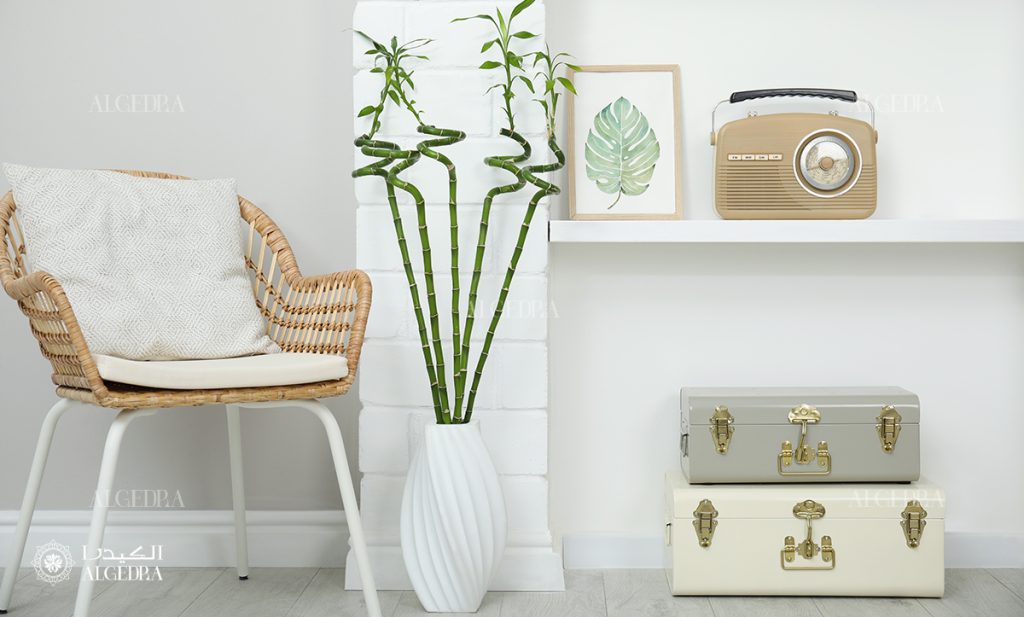Creating Spaces of Peace: How Mindful Living Can Inspire Minimalist Organization at Home

Embracing Mindfulness for a Harmonious Home
In today’s fast-paced world, the search for tranquility often leads us to the concept of mindful living. Mindful living encourages us to be present, cherish each moment, and significantly, simplify our surroundings. A balanced and peaceful home serves as a sanctuary amidst the chaos of daily life, making it essential for mental well-being. Research shows that a clutter-free environment can reduce stress and increase focus, making the concept of mindfulness increasingly relevant in our modern lifestyles.
One effective approach to achieve this tranquil living space is through minimalist organization, a practice that promotes the idea of “less is more.” By adopting minimalist principles, you can transform your living quarters into a haven of comfort and serenity. There are several crucial aspects to consider for minimalist organization:
- Decluttering: Removing excess items that do not serve a functional purpose in your life is the first step toward minimalism. This process may involve donating or selling belongings you no longer use or need. For example, if your kitchen cabinets are overflowing with appliances you use only occasionally, letting go of some can create a more functional cooking space.
- Functional Design: Creating spaces that are both useful and visually appealing is key to a successful minimalist approach. This might involve choosing multifunctional furniture, such as a coffee table that doubles as storage or a sofa bed for guests. By being intentional with your design choices, you can create areas in your home that serve multiple purposes while enhancing aesthetics.
- Mindful Choices: Selecting decor and furniture that align with your values will help cultivate a space that reflects your identity. For instance, opting for ethically sourced materials or choosing local artisans not only supports sustainability but also adds a unique touch to your home.
When we blend mindfulness with minimalism, we cultivate environments that reflect our true selves. Such spaces allow for clarity and focus, creating room for creativity and relaxation. By incorporating these principles into your daily routines, you may find that your relationships, work, and overall well-being improve significantly. In the United States, many are beginning to embrace these concepts, participating in movements like “tiny living” or “minimalism challenges,” encouraging people to rethink their possessions and consumption habits.
As you dive deeper into the principles of mindful living, exploring local workshops or online resources can provide practical ways to implement these ideas in your own home. The journey to a peaceful living environment is not just about decluttering; it’s about nurturing a mindset that values simplicity and intentionality. Embracing mindfulness, therefore, can inspire peace and purpose in your daily routines, leading to a more harmonious life.
DISCOVER MORE: Click here to learn effective decluttering methods

Decluttering: The First Step Towards Serenity
To foster a peaceful atmosphere at home, decluttering is an essential first step that many individuals overlook. By systematically removing items that no longer serve a purpose, you create an environment that promotes calmness and clarity of mind. The process of decluttering can begin small; consider starting with one room or even a single drawer. Studies indicate that an overwhelming number of possessions can lead to anxiety and decision fatigue, making it crucial to periodically evaluate your belongings.
Embrace the “one-in, one-out” rule: for every new item you introduce into your home, consider removing an old one. This practice helps maintain a balance and prevents the accumulation of clutter over time. Additionally, engaging in regular decluttering sessions—perhaps once each season—can help keep your living space organized and free from distraction.
Functional Design: Enhancing Comfort and Utility
Once you’ve decluttered, the next step is to focus on functional design. Minimalist organization is not merely about having fewer items, but rather about creating spaces that are not only practical but also aesthetically pleasing. Choose furniture that serves multiple roles, such as a storage ottoman that can also be a seat or a bookshelf that doubles as a room divider.
- Consider Open Spaces: Emphasize open floor plans that allow for movement and natural light. These designs can make spaces feel larger and more inviting.
- Quality Over Quantity: Invest in fewer, high-quality pieces that will stand the test of time, thus eliminating the need for constant replacements.
- Simplistic Decor: Opt for decor that adds character without overwhelming the senses. This may include a few carefully chosen art pieces or plants that infuse life into your home.
Mindful Choices: Curating Your Home Environment
Mental well-being is nurtured through mindful choices regarding the items you allow into your living space. Selecting decor and furnishings that resonate with your personal values can add a sense of authenticity to your home. For instance, supporting local artisans not only fosters community but imparts a unique flair to your environment.
Furthermore, think about the emotional significance of items you choose to keep. Each object should evoke a sense of joy or utility rather than serve as a mere filler. This approach will lay the groundwork for creating an emotionally supportive space that harmonizes with mindful living principles.
In summary, the importance of mindful living coupled with minimalist organization cannot be overstated. As you begin to embrace these concepts, you’ll likely notice a transformation in not only your surroundings but your overall outlook on life. Creating spaces of peace starts small, but the impact resonates throughout your daily experiences, making way for a more centered and joyful existence.
| Advantages of Mindful Living | Inspiration for Minimalist Organization |
|---|---|
| Enhanced Focus | Mindful living encourages avoiding distractions and prioritizing important aspects of life. |
| Reduced Stress | A minimalist environment promotes tranquility and decreases anxiety-inducing clutter. |
Engaging with the concept of mindful living not only fosters an atmosphere of peace within your home but also serves as a catalyst for creating spaces that are intentionally organized. By deliberately focusing on the present moment, individuals can cultivate an awareness of their environment that transforms how they interact with their belongings.An essential advantage of mindful living is the enhanced focus it brings to daily tasks. When distractions are minimized, people can prioritize what truly matters, leading to better decision-making regarding possessions. This heightened focus contributes directly to a successful minimalist approach, urging individuals to let go of items that do not serve a purpose in their lives.Another significant benefit is the reduced stress experienced when living in a more organized environment. Management of space becomes much simpler as clutter is eliminated; the result is a serene oasis that nurtures mental well-being. Furthermore, this uncluttered aesthetic not only pleases the eye but also positively influences one’s emotional health, making it easier to navigate daily challenges with clarity and calmness. Exploring these links between mindful living and minimalist organization can lead one toward a more fulfilling and peaceful lifestyle.
DISCOVER MORE: Click here to learn how to involve your family in decluttering
Intentional Storage Solutions: Organizing with Purpose
After decluttering and adopting a functional design, the next key aspect of minimalist organization is developing intentional storage solutions. Finding innovative ways to store your belongings not only promotes an organized environment but can also enhance your overall sense of serenity. Consider hidden storage options that allow for easy access while keeping your space visually uncluttered.
- Multi-Functional Furniture: Furniture that offers built-in storage, such as beds with drawers or sofas with compartments, can significantly reduce mess while maximizing space efficiency.
- Vertical Space Utilization: Opt for wall-mounted shelves and hooks to keep items off the floor and countertops, creating a more open environment. This strategy not only makes your home more functional but also gives the illusion of space.
- Transparent Bins and Labels: Using clear bins to store and categorize items can streamline your organization process. Labeling bins adds an extra layer of clarity, making it easier to find what you need without sifting through piles.
Mindful Routines: Cultivating Daily Practices
In addition to creating physical space, mindful routines can reinforce the principles of minimalist organization in your daily life. Developing habits that encourage consistency ensures your home remains a sanctuary of peace. Start with simple practices, such as dedicating a few minutes each day to tidy up. Set aside ten minutes each evening to reset your spaces, ensuring everything is in its designated spot for the next day.
Incorporating mindfulness into your daily activities can also help maintain the peaceful environment you’ve worked so hard to establish. For instance, as you cook, focus on the experience, noticing the textures and colors of the ingredients. This practice not only enhances the act of cooking but also reinforces the concept of living with intention and appreciation for your surroundings.
The Impact of Natural Elements: Bringing the Outside In
Integrating natural elements into your home can further enhance its calming atmosphere. Plants not only serve as aesthetically pleasing decor but also improve air quality and promote a sense of well-being. Research suggests that spending time in nature or surrounded by greenery can lower stress levels and boost mood, making it an excellent addition to your minimalist design.
Choose low-maintenance houseplants, such as succulents or snake plants, to fit seamlessly into your organization without demanding too much attention. You might also consider incorporating natural materials like wood, stone, or woven textiles to create a grounding effect in your living spaces. By thoughtfully selecting each item, you contribute to the creation of a peaceful environment that reflects your commitment to mindful living.
Making conscious choices about materials and designs can deepen your connection to your living space, inviting simplicity and tranquility into your everyday life. Each detail, whether it’s a textured rug or a handmade vase, adds to the story of your home, ultimately aligning your physical space with the principles of mindfulness and minimalism.
LEARN MORE: Click here for insights on minimalism and time management
Embracing a Peaceful Lifestyle Through Mindful Minimalism
As we delve into the world of mindful living, it becomes increasingly clear that creating spaces of peace is not merely about physical decluttering but also about nurturing a deeper connection to our surroundings. By implementing minimalist organization strategies, such as intentional storage solutions, mindful routines, and the integration of natural elements, we can transform our homes into sanctuaries that promote tranquility and well-being.
Each choice we make—from selecting multi-functional furniture to incorporating greenery—can have a profound impact on our mental state. The act of organizing mindfully encourages us to reflect on what we truly need, paving the way for a lifestyle that prioritizes simplicity and serenity. Consideration must also be given to daily practices that reinforce this mindset, allowing us to cultivate an ongoing sense of calm within our environments.
In a world where chaos often reigns, creating spaces that echo peace requires intention and dedication. As we explore the principles of minimalism intertwined with mindfulness, we open ourselves to new perspectives and experiences. These practices not only facilitate organization but also invite a mindful appreciation for our homes, reminding us that our living spaces can significantly influence our emotional and mental health.
Ultimately, the journey toward a peaceful home is highly personal and should resonate with your unique life experiences. By embracing these concepts, you embark on a transformative path that leads to a more harmonious existence, both within the walls of your home and beyond.


